Résultats de recherche de titre
Articles 1488441 à 1488460 sur 1502757
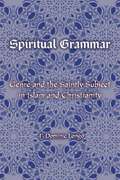
Spiritual Grammar identifies a genre of religious literature that until now has not been recognized as such. In this surprising…
and theoretically nuanced study, F. Dominic Longo reveals how grammatical structures of language addressed in two medieval texts published nearly four centuries apart, from distinct religious traditions, offer a metaphor for how the self is embedded in spiritual reality. Reading The Grammar of Hearts (Nahw al-qulūb) by the great Sufi shaykh and Islamic scholar 'Abd al-Karīm al-Qushayrī (d. 1074) and Moralized Grammar (Donatus moralizatus) by Christian theologian Jean Gerson (d. 1429), Longo reveals how both authors use the rules of language and syntax to advance their pastoral goals. Indeed, grammar provides the two masters with a fresh way of explaining spiritual reality to their pupils and to discipline the souls of their readers in the hopes that their writings would make others adept in the grammar of the heart.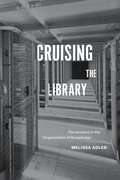
Cruising the Library: Perversities in the Organization of Knowledge
Par Melissa Adler. 2017
Cruising the Library offers a highly innovative analysis of the history of sexuality and categories of sexual perversion through a…
critical examination of the Library of Congress and its cataloging practices. Taking the publication of Eve Kosofsky Sedgwick’s Epistemologies of the Closet as emblematic of the Library’s inability to account for sexual difference, Melissa Adler embarks upon a detailed critique of how cataloging systems have delimited and proscribed expressions of gender, sexuality, ethnicity, and race in a manner that mirrors psychiatric and sociological attempts to pathologize non-normative sexual practices and civil subjects.Taking up a parallel analysis, Adler utilizes Roderick A. Ferguson’s Aberrations in Black as another example of how the Library of Congress fails to account for, and thereby “buries,” difference. She examines the physical space of the Library as one that encourages forms of governmentality as theorized by Michel Foucault while also allowing for its utopian possibilities. Finally, she offers a brief but highly illuminating history of the Delta Collection. Likely established before the turn of the twentieth century and active until its gradual dissolution in the 1960s, the Delta Collection was a secret archive within the Library of Congress that housed materials confiscated by the United States Post Office and other federal agencies. These were materials deemed too obscene for public dissemination or general access. Adler reveals how the Delta Collection was used to regulate difference and squelch dissent in the McCarthy era while also linking it to evolving understandings of so-called perversion in the scientific study of sexual difference.Sophisticated, engrossing, and highly readable, Cruising the Library provides us with a critical understanding of library science, an alternative view of discourses around the history of sexuality, and an analysis of the relationship between governmentality and the cataloging of research and information—as well as categories of difference—in American culture.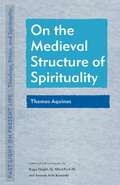
If Thomas Aquinas was born in 1225, as is commonly thought, then he died before reaching the age of fifty…
after producing the single most influential systematic theology of the Western Christian tradition. He did this with a formula: He internalized the thought of Aristotle as it was being introduced into western Europe and translated into Latin, and he in turn “translated” Christianity into this Aristotelian language. One can use the principles of hermeneutics outlined in Retrieving the Spiritual Teaching of Jesus of this series to analyze what was going on as Aquinas went through some of the basic doctrines of the Church in his Summa Theologiae. He laid out their contents by answering an exhaustive series of questions and responding to each of them in intricate detail. The model for each question and answer was drawn directly from the pattern of learning at the University of Paris. Although systematic and abstract, it also enabled an extensive conversation with the tradition of classical theologians and his own contemporaries. This may seem quite distant from spiritual life on the ground, but the method produced a clear understanding of the structure of spiritual life in terms of its goal and the means of attaining it. Aquinas’s analysis of grace—how it enabled genuine Christian spirituality, empowered the virtues, and led to eternal life—constitutes a classic substructure of Western Christian spirituality that became all the more distinctive when Reformation spiritualities offered alternatives to it.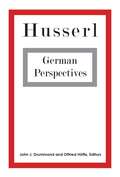
Husserl: German Perspectives (The a To Z Guide Ser. #166)
Par John J. Drummond and Otfried Höffe. 2008
Edmund Husserl, generally regarded as the founding figure of phenomenology, exerted an enormous influence on the course of twentieth and…
twenty-first century philosophy. This volume collects and translates essays written by important German-speaking commentators on Husserl, ranging from his contemporaries to scholars of today, to make available in English some of the best commentary on Husserl and the phenomenological project. The essays focus on three problematics within phenomenology: the nature and method of phenomenology; intentionality, with its attendant issues of temporality and subjectivity; and intersubjectivity and culture. Several essays also deal with Martin Heidegger’s phenomenology, although in a manner that reveals not only Heidegger’s differences with Husserl but also his reliance on and indebtedness to Husserl’s phenomenology.Taken together, the book shows the continuing influence of Husserl’s thought, demonstrating how such subsequent developments as existentialism, hermeneutics, and deconstruction were defined in part by how they assimilated and departed from Husserlian insights. The course of what has come to be called continental philosophy cannot be described without reference to this assimilation and departure, and among the many successor approaches phenomenology remains a viable avenue for contemporary thought. In addition, problems addressed by Husserl—most notably, intentionality, consciousness, the emotions, and ethics—are of central concern in contemporary non-phenomenological philosophy, and many contemporary thinkers have turned to Husserl for guidance. The essays demonstrate how significant Husserl remains to contemporary philosophy across several traditions and several generations.Includes essays by Rudolf Bernet, Klaus Held, Ludwig Landgrebe, Dieter Lohmar, Verena Mayer and Christopher Erhard, Ullrich Melle, Karl Mertens, Ernst Wolfgang Orth, Jan Patočka, Sonja Rinofner-Kreidl, Karl Schuhmann, and Elisabeth Ströker.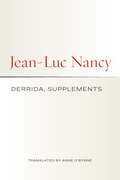
Derrida, Supplements
Par Jean-Luc Nancy. 2023
When Jean-Luc Nancy first encountered the work of Jacques Derrida in the 1960s, he knew he was hearing something new,…
a voice genuinely of its time. Thinking with and against each other over the course of their long friendship, the two thinkers reshaped the European intellectual landscape. Nancy’s writings on Derrida, collected in this volume, reflect on the elements of their shared concerns with politics, the arts, religion, the fate of deconstruction, and the future of sense. Rather than studies, commentaries, or interpretations of Derrida’s thought, they are responses to his presence—not exactly a presence to self, but a presence in the world.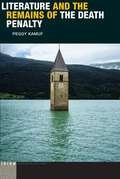
Literature and the Remains of the Death Penalty (Idiom: Inventing Writing Theory)
Par Peggy Kamuf. 2019
Why have generations of philosophers failed or refused to articulate a rigorous challenge to the death penalty, when literature has…
been rife with death penalty abolitionism for centuries? In this book, Peggy Kamuf explores why any properly philosophical critique of capital punishment in the West must confront the literary as that which exceeds the logical demands of philosophy.Jacques Derrida has written that “the modern history of the institution named literature in Europe over the last three or four centuries is contemporary with and indissociable from a contestation of the death penalty.” How, Kamuf asks, does literature contest the death penalty today, particularly in the United States where it remains the last of its kind in a Western nation that professes to be a democracy? What resources do fiction, narrative, and poetic language supply in the age of the remains of the death penalty?Following a lucid account of Derrida’s approach to the death penalty, Kamuf pursues this question across several literary texts. In reading Orwell’s story “A Hanging,” Kamuf explores the relation between literary narration and the role of the witness, concluding that such a witness needs the seal of literary language in order to account for the secret of the death penalty. The next chapter turns to the American scene with Robert Coover’s 1977 novel The Public Burning, which restages the executions of Julius and Ethel Rosenberg as an outlandish public spectacle in Times Square. Because this fictional device reverses the drive toward secrecy that, beginning in the mid-nineteenth century, put an end to public executions in the West, Kamuf reads the novel in a tension with the current tendency in the U.S. to shore up and protect remaining death penalty practices through increasingly pervasive secrecy measures. A reading of Norman Mailer’s 1979 novel The Executioner’s Song, shows the breakdown of any firm distinction between suicide and capital execution and explores the essential affinity between traditional narrative structure, which is plotted from the end, and the “plot” of a death penalty. Final readings of Kafka, Derrida, and Baudelaire consider the relation between literature and law, showing how performative literary language can “play the law. “A brief conclusion, titled “Postmortem,” reflects on the condition of literature as that which survives the death penalty.A major contribution to the field of law and society, this book makes the case for literature as a space for contesting the death penalty, a case that scholars and activists working across a range of traditions will need to confront.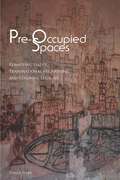
Runner Up Winner of the Edinburgh Gadda Prize - Established Scholars, Cultural Studies CategoryWinner of the American Association for Italian…
Studies Book Prize (20th & 21st Centuries)Honorable Mention for the Howard R. Marraro PrizeBy linking Italy’s long history of emigration to all continents in the world, contemporary transnational migrations directed toward it, as well as the country’s colonial legacies, Fiore’s book poses Italy as a unique laboratory to rethink national belonging at large in our era of massive demographic mobility. Through an interdisciplinary cultural approach, the book finds traces of globalization in a past that may hold interesting lessons about inclusiveness for the present. Fiore rethinks Italy’s formation and development on a transnational map through cultural analysis of travel, living, and work spaces as depicted in literary, filmic, and musical texts. By demonstrating how immigration in Italy today is preoccupied by its past emigration and colonialism, the book stresses commonalities and dispels preoccupations.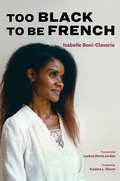
Too Black to Be French
Par Isabelle Boni-Claverie. 2025
Winner, Grand Prize, French Voices Award In Too Black to Be French, Isabelle Boni-Claverie navigates the complexities of identity, race,…
and family in a world that constantly questions her belonging. Boni-Claverie's singular account interweaves the extraordinary life experiences of three generations of her family: her grandfather from Ivory Coast, who married a middle-class white woman from southern France in the 1930s; her biological parents, and her mixed-race aunt and white upper-class uncle who adopted her; as well as her own life as a successful film director and writer faced with abiding stereotypes and discrimination.Written with humor and aplomb, Boni-Claverie’s narrative examines the enduring effects of France’s colonial past and the deep-seated structural prejudices affecting Black people in a country that prides itself on stories of its hospitality toward African Americans fleeing segregation. Updating this picture to reveal the complexities and challenges of being Black in France where discussion of race is often taboo, Boni-Claverie offers an American readership rare insights into racial dynamics on both sides of the Atlantic. Too Black to Be French is at once a sociological portrait of France, a multicultural family album, and a transatlantic coming-of-age story. It will appeal to readers eager for a passionate fresh voice devoted to better understanding the challenges of today’s world and the courage it takes to overcome them. Through vivid storytelling, Boni-Claverie invites readers to traverse a path filled with emotional depth, cultural introspection, and a quest for acceptance.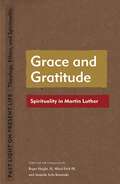
Martin Luther (1483–1546) is a classic Christian author who spearheaded the Reformation and whose witness has relevance for life in…
the present-day world. Grace and Gratitude presents two texts that represent his spirituality. Because Luther wrote so much in so many different genres, the choice of only two texts provides a limited taste of his spirituality. But they open up a specific, central, and distinctive mark of his conception of the structure of Christian life. The name of the theme, justification by grace through faith, often spontaneously correlates with Luther’s name and his theology. The phrase points to a key theological doctrine that centered his thinking; it lay so deeply ingrained in his outlook that it sometimes explicitly but always tacitly shaped all his early theological views and bestowed a distinctive character to his ethics and spirituality. The two texts are chosen to illustrate how the conviction represented by the phrase draws its authority from scripture, especially Paul, and was discursively analyzed in an early foundational work on Christian life, The Freedom of a Christian. These texts do not represent all there is to say about spirituality in Luther’s thought by any means, and this part should not be taken for the whole. But the coupling of these texts penetrates deeply into what may be called Luther’s Christian spirituality of gratitude.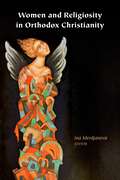
Women and Religiosity in Orthodox Christianity (Orthodox Christianity and Contemporary Thought)
Par Ina Merdjanova. 2022
Women and Religiosity in Orthodox Christianity fills a significant gap in the sociology of religious practice: Studies focused on women’s…
religiosity have overlooked Orthodox populations, while studies of Orthodox practice (operating within the dominant theological, historical, and sociological framework) have remained gender-blind.The essays in this collection shed new light on the women who make up a considerable majority of the Orthodox population by engaging women’s lifeworlds, practices, and experiences in relation to their religion in multiple, varied localities, discussing both contemporary and pre-1989 developments. These contributions critically engage the pluralist and changing character of Orthodox institutional and social life by using feminist epistemologies and drawing on original ethnographic research to account for Orthodox women’s previously ignored perspectives, knowledges, and experiences.Combining the depth of ethnographic analysis with geographical breadth and employing a variety of research methodologies, this book expands our understanding of Orthodox Christianity by examining Orthodox women of diverse backgrounds in different settings: parishes, monasteries, and the secular spaces of everyday life, and under shifting historical conditions and political regimes. In defiance of claims that Orthodox Christianity is immutable and fixed in time, these essays argue that continuity and transformation can be found harmoniously in social practices, demographic trends, and larger material contexts at the intersection between gender, Orthodoxy, and locality.Contributors: Kristin Aune, Milica Bakic-Hayden, Maria Bucur, Ketevan Gurchiani, James Kapaló, Helena Kupari, Ina Merdjanova, Sarah Riccardi-Swartz, Eleni Sotiriou, Tatiana Tiaynen-Qadir, Detelina Tocheva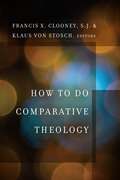
How to Do Comparative Theology (Comparative Theology: Thinking Across Traditions)
Par Francis X. Clooney, S.J., and Klaus Von Stosch. 2018
For a generation and more, the contribution of Christian theology to interreligious understanding has been a subject of debate. Some…
think of theological perspectives are of themselves inherently too narrow to support interreligious learning, and argue for an approach that is neutral or, on a more popular level, grounded simply open-minded direct experience. In response, comparative theology argues that theology, as faith seeking understanding, offers a vital perspective and a way of advancing interreligious dialogue, aided rather than hindered by commitments; theological perspectives can both complement and step beyond the study of religions by methods detached and merely neutral. Thus comparative theology has been successful in persuading many that interreligious learning from one faith perspective to another is both possible and worthwhile, and so the work of comparative theology has become more recognized and established globally. With this success there has come to the fore new challenges regarding method: How does one do comparative theological work in a way that is theologically grounded, genuinely open to learning from the other, sophisticated in pursuing comparisons, and fruitful on both the academic and practical levels? How To Do Comparative Theology therefore contributes to the maturation of method in the field of comparative theological studies, learning across religious borders, by bringing together essays drawing on different Christian traditions of learning, Judaism and Islam, Hinduism and Buddhism, the wisdom of senior scholars, and also insights from a younger generation of scholars who have studied theology and religion in new ways, and are more attuned to the language of the “spiritual but not religious.” The essays in this volume show great diversity in method, and also—over and again and from many angles—coherence in intent, a commitment to one learning from the other, and a confidence that one’s home tradition benefits from fair and unhampered learning from other and very different spiritual and religious traditions. It therefore shows the diversity and coherence of comparative theology as an emerging discipline today.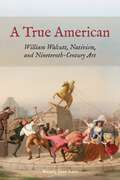
A True American: William Walcutt, Nativism, and Nineteenth-Century Art
Par Wendy Jean Katz. 2022
This book argues that nativism, the hostility especially to Catholic immigrants that led to the organization of political parties like…
the Know-Nothings, affected the meaning of nineteenthcentury American art in ways that have gone unrecognized. In an era of industrialization, nativism’s erection of barriers to immigration appealed to artisans, a category that included most male artists at some stage in their careers. But as importantly, its patriotic message about the nature of the American republic also overlapped with widely shared convictions about the necessity of democratic reform. Movements directed toward improving the human condition, including anti-slavery and temperance, often consigned Catholicism, along with monarchies and slavery, to a repressive past, not the republican American future. To demonstrate the impact of this political effort by humanitarian reformers and nativists to define a Protestant character for the country, this book tracks the work and practice of artist William Walcutt. Though he is little known today, in his own time his efforts as a painter, illustrator and sculptor were acclaimed as masterly, and his art is worth reconsidering in its own right. But this book examines him as a case study of an artist whose economic and personal ties to artisanal print culture and cultural nationalists ensured that he was surrounded by and contributed to anti-Catholic publications and organizations. Walcutt was not anti immigrant himself, nor a member of a nativist party, but his kin, friends, and patrons publicly expressed warnings about Catholic and foreign political influence. And that has implications for better-known nineteenth-century historical and narrative art. Precisely because Walcutt’s profile and milieu were so typical for artists in this period, this book is able to demonstrate how central this supposedly fringe movement was to viewers and makers of American art.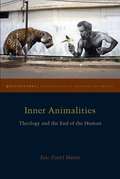
Most theology proceeds under the assumption that divine grace works on human beings at the points of our supposed uniqueness…
among earth’s creatures—our freedom, our self-awareness, our language, or our rationality. Inner Animalities turns this assumption on its head. Arguing that much theological anthropology contains a deeply anti-ecological impulse, the book draws creatively on historical and scriptural texts to imagine an account of human life centered in our creaturely commonality.The tendency to deny our own human animality leaves our self-understanding riven with contradictions, disavowals, and repressions. How are human relationships transformed when God draws us into communion through our instincts, our desires, and our bodily needs? Meyer argues that humanity’s exceptional status is not the result of divine endorsement, but a delusion of human sin. Where the work of God knits human beings back into creaturely connections, ecological degradation is no longer just a matter of bodily life and death, but a matter of ultimate significance.Bringing a theological perspective to the growing field of Critical Animal Studies, Inner Animalities puts Gregory of Nyssa and Karl Rahner in conversation with Jacques Derrida, Giorgio Agamben, Kelly Oliver, and Cary Wolfe. What results is not only a counterintuitive account of human life in relation with nonhuman neighbors, but also a new angle into ecological theology.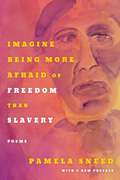
Imagine Being More Afraid of Freedom than Slavery
Par Pamela Sneed. 2023
An incendiary literary work more relevant now than ever.“if anger were an ax/it would split me open/and if this is…
a sermon/let it be my granddaddy’s sermon/my grandmother’s foottapping/steady rocking/choir singing” —from "It Is Not a New Age"First published in 1998, Imagine Being More Afraid of Freedom than Slavery is the debut collection by acclaimed poet and performer Pamela Sneed. Provocative and potent, it tackles the political and personal issues of enslavement, sexuality, emotional trauma, and abuse. These poems chart the journey of an artist trying to escape cycles of dependency and reclaim lost self and identity. Drawing parallels to Harriet Tubman’s journey on the Underground Railroad, Sneed’s explorations of the woods are a metaphor and emotional path one must explore to attain self-ownership. Sneed’s poems are bound by the search for love, freedom, and justice—from images of lesbian love to Emmet Till’s bloated body, they offer a raging cry and a roadmap for those interested in transforming the personal into social justice and abolitionist practices.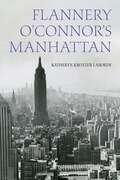
Flannery O'Connor's Manhattan (Studies in the Catholic Imagination: The Flannery O'Connor Trust Series)
Par Katheryn Krotzer Laborde. 2024
This book offers a unique twist to the Who’s Who of midcentury writers, editors, and artistsMuch is made of Flannery…
O’Connor’s life on the Georgia dairy farm, Andalusia—a rural setting that clearly influenced her writing. But before she lived on that farm, before she showed signs of having lupus, before she became dependent on her mother and then succumbed to the disease at thirty-nine, O’Connor lived in the northeast. She stayed at the artists’ colony Yaddo in 1948 and early 1949 and lived in Connecticut with good friends from fall of 1949 through all of 1950. But in between those experiences, and perhaps more importantly, O’Connor lived in Manhattan.In her biographies, little is said of her time in Gotham; in some sources, this period gets no more than one sentence. But little is said because little has been known. In Flannery O’Connor’s Manhattan, the author’s goal is to explore New York City from O’Connor’s point of view. To do this, the author consults not just letters (both unpublished and published) and biography, but five personal address books housed in Emory’s Stuart A. Rose Manuscript, Archives and, Rare Book Library. The result is a book of interest to both the O’Connor fan and the O’Connor scholar, not to mention those interested in midcentury Manhattan.Flannery O’Connor’s Manhattan is part guide to the who-was-who and who-lived-where of New York from roughly 1948 to 1964, at least those as they mattered to O’Connor. It also acts as a window to the writer’s experiences in the city, whether she was coming into town for a series of meetings or strolling down Broadway on her way to lunch. In the end, it is the combination of the who-she-knew and the what-she-did that formed O’Connor’s personal view of what is arguably the most famous of American cities.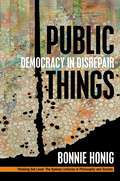
Public Things: Democracy in Disrepair (Thinking Out Loud)
Par Bonnie Honig. 2017
In the contemporary world of neoliberalism, efficiency is treated as the vehicle of political and economic health. State bureaucracy, but…
not corporate bureaucracy, is seen as inefficient, and privatization is seen as a magic cure for social ills. In Public Things: Democracy in Disrepair, Bonnie Honig asks whether democracy is possible in the absence of public services, spaces, and utilities. In other words, if neoliberalism leaves to democracy merely electoral majoritarianism and procedures of deliberation while divesting democratic states of their ownership of public things, what will the impact be?Following Tocqueville, who extolled the virtues of “pursuing in common the objects of common desires,” Honig focuses not on the demos but on the objects of democratic life. Democracy, as she points out, postulates public things—infrastructure, monuments, libraries—that citizens use, care for, repair, and are gathered up by. To be “gathered up” refers to the work of D. W. Winnicott, the object relations psychoanalyst who popularized the idea of “transitional objects”—the toys, teddy bears, or favorite blankets by way of which infants come to understand themselves as unified selves with an inside and an outside in relation to others. The wager of Public Things is that the work transitional objects do for infants is analogously performed for democratic citizens by public things, which press us into object relations with others and with ourselves.Public Things attends also to the historically racial character of public things: public lands taken from indigenous peoples, access to public goods restricted to white majorities. Drawing on Hannah Arendt, who saw how things fabricated by humans lend stability to the human world, Honig shows how Arendt and Winnicott—both theorists of livenesss—underline the material and psychological conditions necessary for object permanence and the reparative work needed for a more egalitarian democracy.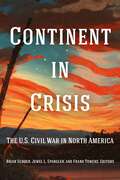
Continent in Crisis: The U.S. Civil War in North America (Reconstructing America)
Par Brian Schoen, Jewel L. Spangler, and Frank Towers. 2023
Written by leading historians of the mid–nineteenth century United States, this book focuses on the continental dimensions of the U.S.…
Civil War. It joins a growing body of scholarship that seeks to understand the place of America’s mid-nineteenth-century crisis in the broader sweep of world history. However, unlike other studies that have pursued the Civil War’s connections with Europe and the Caribbean, this volume focuses on North America, particularly Mexico, British Canada, and sovereign indigenous states in the West.As the United States went through its Civil War and Reconstruction, Mexico endured its own civil war and then waged a four-year campaign to expel a French-imposed monarch. Meanwhile, Britain’s North American colonies were in complex and contested negotiations that culminated in confederation in 1867. In the West, indigenous nations faced an onslaught of settlers and soldiers seeking to conquer their lands for the United States. Yet despite this synchronicity, mainstream histories of the Civil War mostly ignore its connections to the political upheaval occurring elsewhere in North America.By reading North America into the history of the Civil War, this volume shows how battles over sovereignty in neighboring states became enmeshed with the fratricidal conflict in the United States. Its contributors explore these entangled histories in studies ranging from African Americans fleeing U.S. slavery by emigrating to Mexico to Confederate privateers finding allies in Halifax, Nova Scotia. This continental perspective highlights the uncertainty of the period when the fate of old nations and possibilities for new ones were truly up for grabs.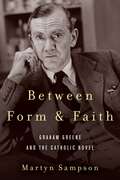
What is a “Catholic” novel? This book analyzes the fiction of Graham Greene in a radically new manner, considering in…
depth its form and content, which rest on the oppositions between secularism and religion. Sampson challenges these distinctions, arguing that Greene has a dramatic contribution to add to their methodological premises. Chapters on Greene’s four “Catholic” novels and two of his “post-Catholic” novels are complemented by fresh insight into the critical importance of his nonfiction. The study paints an image of an inviting yet beguilingly complex literary figure.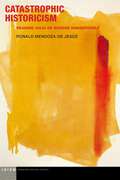
Catastrophic Historicism: Reading Julia de Burgos Dangerously (Idiom: Inventing Writing Theory)
Par Ronald Mendoza-de Jesús. 2024
Catastrophic Historicism unsettles the historicist constitution of Julia de Burgos (1914–53), Puerto Rico’s most iconic writer—a critical task that necessitates…
redefining the concept of historicism. Through readings of Aristotle, Walter Benjamin, Jacques Derrida, Werner Hamacher, and Frank Ankersmit, Mendoza-de Jesús shows that historicism grounds historical objectivity in the historian’s capacity to compose totalizing narratives that domesticate the contingency of the past. While critiques of historicism as a realism leave untouched the sovereignty of the historian, the book insists that reading the text of history requires an attunement to danger—a modality that interrupts historicism by infusing the past with a contingency that evades total appropriation.After desedimenting the monumental tradition that has reduced de Burgos to a totemic figure, Catastrophic Historicism reads the poet’s first collection, Poema en 20 surcos (1938). Mendoza-de Jesús argues that the historicity of Poema crystallizes in the lyrical speaker’s self-institution as an embodied ipseity, which requires producing racialized/gendered allegorical figures—the bearers of an abject flesh—that lack any ontological resistance to modern alienation. Rather than treating de Burgos’s poetics of selfhood as the ideal image of Puerto Rican sovereignty, Mendoza-de Jesús endangers this idealization by drawing attention to the abjection that sustains our attachments to ipseity as the form of a truly sovereign life. In this way, Catastrophic Historicism not only resets the terms of ongoing critiques of historicism in the humanities—it also intervenes in Puerto Rican historicity for the sake of its transformation.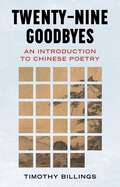
Twenty-Nine Goodbyes: An Introduction to Chinese Poetry
Par Timothy Billings. 2025
A primer for those with no previous knowledge of Chinese, this book introduces readers to the fundamentals of classical Chinese…
poetry through twenty-nine ways of understanding a single poem. “Seeing Off a Friend,” by the great Tang poet Li Bai (701–762) has long been praised for its vividness, subtlety, and poignancy. Anthologizing twenty-nine translations of the poem, Timothy Billings not only introduces the poem’s richness and depth but also the nuanced art of translating Chinese poetry into European languages. A famous exemplar of “seeing off poetry,” which was common in an empire whose literati were continually on the move, Li’s poem has continued to fascinate readers far removed from its moment of composition, from the Victorians, to Ezra Pound, to contemporary translators from around the world. In talking us through these linguistic crossings, Billings unpacks the intricacies of the lüshi or "regulated verse poem," a form as pivotal to Chinese literature as the sonnet is to European tradition.This book promises to transform its readers, step-by-step, into adept interpreters of one of the most significant verse forms in Chinese literary history. Billings’s engaging teaching style, backed by a lightly worn but deep scholarly engagement with Chinese poetry, makes this work an indispensable guide for anyone interested in poetry, translation, or the cultural heritage of China.